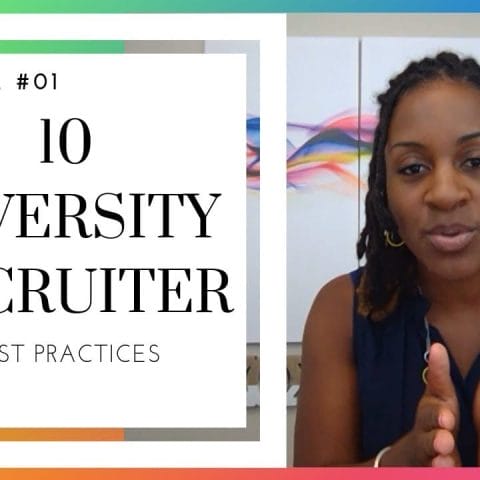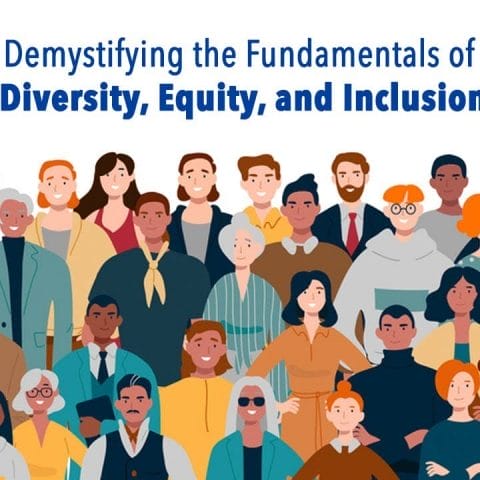You’re searching for AI bias free interview training, and the answer is a scalable, tech-driven system that coaches your team to run fair, consistent interviews from day one with Hyperspace.
Hyperspace blends soft-skills simulations, self-paced learning, and interactive role-play powered by Autonomous avatars that adapt mood, gesture, and context. These simulations let your team practice real decision-making before they meet candidates.
Structured exercises and standardized scorecards bring objectivity to each hiring moment. Use evidence-based rubrics and LMS-integrated assessments to spot trends and reduce common problems like unconscious and confirmation bias.
Practice complex conversations in safe, realistic sessions. Capture data from every run to reveal strengths, blind spots, and measurable impact on time-to-fill and quality of hire.
Key Takeaways
- Hyperspace gives you a single platform to scale consistent, fair interviews.
- Autonomous avatars create realistic role-play for better interviewer readiness.
- Standardized rubrics and scorecards keep evaluations objective and repeatable.
- Practice sessions expose patterns and help you reduce hiring errors.
- Data-driven insights make the business case for more equitable talent decisions.
What AI bias free interview training is and how Hyperspace delivers unbiased interviewing from day one

Hyperspace equips hiring managers with a repeatable, skill-first program that standardizes how every candidate is assessed. You get structured learning paths, self-paced modules, and live role-play so teams practice real decisions before meeting candidates.
Autonomous AI avatars act as virtual candidates. They read context, shift tone and gesture, and surface real reactions so your interviewer gains practical experience in varied formats.
- Goal: a repeatable program that teaches hiring managers and recruiters to run equitable, consistent interviews across roles and regions.
- Operational fairness from day one via structured modules, simulated role-play, and LMS-integrated assessments for calibration and reporting to managers.
- Control environments—phone screens, panel rounds, executive loops—to sharpen pacing, question choices, and candidate experience.
- AI helps generate skill-based question banks, flag biased phrasing, and suggest neutral alternatives while human reviewers coach nuance and judgment.
Use these tools to turn passive content into active practice. The result: measurable improvements in interviewer skills, cleaner data for decisions, and a stronger hiring experience for your company.
The reality of interviewer bias today and why structured processes matter

Every hiring decision carries human judgment, and small shortcuts can steer outcomes off course. Cognitive shortcuts creep into questions, notes, and final scores even when interviewers mean well.
Common unconscious patterns that skew evaluations
Confirmation traps make interviewers seek evidence that matches first impressions.
Halo and horns effects let one trait overshadow job-relevant skills. Affinity bias hides behind “culture fit.”
Gender, beauty, communication-style, and recency effects also distort memory and ratings.
Business impact: hiring quality, diversity, candidate experience, and time-to-hire
These patterns reduce quality of hire and push high-potential candidates out of the running.
They slow the hiring process and harm your employer brand. Negative candidate experiences ripple on review sites.
- Small inconsistencies across dozens of interviews become systemic problems at scale.
- Structured interviews, evidence-based rubrics, diverse panels, and intelligent tools narrow room for subjective judgment.
- Scorecards and role-aligned criteria force focus on evidence over impressions and produce data that reveals blind spots.
How to implement AI bias free interview training as a scalable, step-by-step program
Begin with a data-driven snapshot to reveal where your hiring process needs focus. Centralize transcripts, candidate feedback, and historical scores to spot gaps fast.
Diagnose: Use platform analytics to surface leading questions, pedigree over-indexing, and inconsistent probing. Prioritize modules that fix root causes.
- Standardize: Create structured interviews and calibrated question banks mapped to role-specific criteria and expected evidence.
- Practice: Run mock sessions with Autonomous AI avatars that adapt tone, gesture, and context so interviewers sharpen follow-ups and judgment.
- Assess: Require rubric-based evaluations in the LMS and hold regular calibration sessions to align managers and recruiters.
Close the loop: Let platform tools highlight strengths and gaps, while human coaches refine nuance in empathy and decision-making.
“Pilot with hiring managers, refine per role, then scale to recruiters—measure behavior change, candidate feedback, and pass-through rates.”
Iterate quarterly: Refresh question banks, update scenarios, and track improvements in evaluation consistency and performance. This keeps your processes current as roles and markets evolve.
The AI toolkit that powers unbiased interviewing with Hyperspace
Combine realistic avatars, controlled scenarios, and seamless data flow to sharpen interview skills fast.
Autonomous avatars with natural, context-aware responses
Meet your virtual candidate. Autonomous avatars react to cues with natural dialogue, dynamic gestures, and mood shifts.
They push back on shallow questions and reward evidence-based follow-ups.
Environmental control and scenario variety
Dial settings from phone screens to panel rooms or executive briefings. Test time pressure, remote links, and role-specific scenarios.
Load packs for engineering, sales, product, or leadership to practice the right interview questions for each role.
Seamless data flow and LMS-integrated assessments
Capture rich telemetry—turn-taking, interruption patterns, questioning depth, and listening behaviors—to guide coaching.
Auto-generate structured question banks mapped to competencies and score anchors. Pipe results into your LMS to push assessments and retrieve completion data.
- Flag potentially biased language and evaluation drift while human reviewers add narrative feedback.
- Secure dashboards compare interviewer performance across cohorts and protect sensitive content.
- Scale globally: standardize core processes and adapt scenarios to local language and market norms.
Decision-making skills development with realistic simulations keeps recruiters and hiring managers aligned and accountable.
From practice to performance: turning simulations into consistent, fair hiring decisions
Make every mock session count: convert role-play insights into repeatable hiring actions that sharpen how your team assesses candidates.
Behavioral and situational techniques
Teach your team to ask for evidence, not impressions. Craft behavioral prompts and situational questions that probe scope, actions, and outcomes.
Build communication fluency: clear framing, active listening, and concise follow-ups improve candidate experience and the signal quality you capture.
Calibration at scale
Align on what “good” looks like. Run calibration sessions where interviewers score the same responses using shared scorecards and structured debriefs.
Use centralized notes and consistent examples so recruiters and hiring managers converge on fair evaluations.
Objective scoring and measurement
- Deploy role-specific rubrics that map ratings to observable criteria and job examples.
- Track interviewer variance, leniency/severity, and evaluation drift with LMS-integrated data.
- Tighten the loop: assign refresher mock sessions for interviewers who show drift.
“Standardized practices and shared rubrics turn simulations into reliable decisions.”
Measure what matters: interviewer consistency, candidate experience, pass-through rates, and new-hire performance. Use those metrics to improve the interview process and reduce unconscious bias.
Governance, transparency, and data privacy for AI in the hiring process
Clear governance and visible controls keep your hiring process defensible and fair.
Keep humans accountable. Pair system-generated insights with reviewer approvals so final evaluations and hiring decisions remain transparent and traceable.
Operational practices: curate historical data, audit models regularly, and document prompt or criteria changes. These steps reduce algorithmic bias and protect the integrity of evaluations.
Human-in-the-loop oversight
Design workflows that surface suggested ratings but require manager sign-off before scores lock. This keeps recruiters and managers in control.
Provide easy manual overrides and make every change auditable. That creates a clear record for compliance and review.
Data privacy and security by design
Encrypt recordings, transcripts, and feedback both in transit and at rest. Minimize retention windows and segment access by role to limit exposure.
Integrate with your LMS and core systems using least-privilege access and audit trails. Standardize disclosures so candidates understand how their data is captured, stored, and used.
- Pair insights with reviewer approvals so final evaluations are defensible.
- Audit model inputs and document changes to scenario libraries and criteria.
- Communicate clearly with candidates about recordings, transcripts, and feedback storage.
- Apply encryption, role-based access, and short retention periods for data privacy security.
- Offer opt-outs or alternatives where required and keep manual overrides traceable.
“Transparency builds candidate trust and makes your hiring process stronger.”
Conclusion
Make your interview craft measurable, repeatable, and aligned to job-relevant evidence.
Standardize the process with structured interviews, role-specific rubrics, and calibrated debriefs so every candidate is evaluated fairly. Practice with realistic simulations and self-paced journeys to sharpen skills and reduce subjective judgments.
Hyperspace turns training into performance with Autonomous avatars, interactive role-play, and LMS-integrated assessments. Track progress, pull meaningful data, and align managers and recruiters on a consistent hiring bar.
Anchor human oversight to preserve trust. Use secure recordings, auditable reviews, and clear manager sign-off to protect candidates and drive better outcomes.
Move from intention to action: operationalize unbiased interviewing today, measure what matters, and build diverse, high-performing talent for the future. Learn more about limitations and governance at limitations of AI in HR.
FAQ
Q: What is "Conduct Fair Interviews with AI" and what does Hyperspace offer?
A: Hyperspace delivers a platform that trains hiring managers and interviewers to run consistent, evidence-based interviews. It uses simulated conversations, role-specific rubrics, and LMS integration to help you evaluate candidates fairly from day one.
Q: How does Hyperspace help reduce unconscious bias in hiring?
A: Hyperspace standardizes questions, scoring, and feedback so decisions rely on job-relevant criteria. You get structured interview guides, calibrated scorecards, and recorded practice sessions to reveal patterns in evaluations and correct biased behavior.
Q: What common interviewer biases should hiring teams watch for?
A: Typical issues include affinity bias, halo effect, confirmation bias, and similarity bias. Hyperspace surfaces these patterns through transcript analysis and score trends so you can address them with targeted coaching and process changes.
Q: What business outcomes improve when interviews are standardized?
A: Expect higher hiring quality, better diversity metrics, improved candidate experience, and shorter time-to-hire. Standardization creates defensible decisions and reduces rework from bad hires.
Q: How do you diagnose training needs before rolling out a program?
A: Start with data: review past transcripts, candidate feedback, and scoring variance. Hyperspace helps you identify where interviewers diverge, which roles need tighter rubrics, and which behaviors require coaching.
Q: What components make a scalable interviewer training program?
A: A strong program combines structured interviews, validated question banks, hands-on simulations, rubric-based assessments, and continuous calibration sessions. Integrate these into your LMS and pilot with hiring managers before scaling.
Q: How do mock interviews and role-playing improve interviewer skills?
A: Practice builds muscle memory. Mock sessions let interviewers refine phrasing, follow-up techniques, and evidence-gathering. Recorded simulations provide concrete clips for coaching and quicker skill transfer.
Q: What assessment methods ensure consistent interviewer evaluations?
A: Use objective, role-specific rubrics with clear behavioral anchors. Calibrated group reviews and periodic inter-rater reliability checks keep scoring aligned across teams.
Q: How does Hyperspace’s toolkit simulate realistic interview environments?
A: The platform offers autonomous avatars, varied scenarios across roles and seniority, and environmental controls that mimic real interviews. This prepares interviewers for diverse candidate responses and contexts.
Q: Can the system integrate with existing LMS and ATS tools?
A: Yes. Hyperspace supports seamless data flow into LMS and ATS platforms, enabling synchronized assessments, feedback loops, and secure analytics for hiring metrics.
Q: What measures protect candidate data and recordings?
A: Hyperspace applies data privacy and security best practices, including encrypted storage, role-based access, and configurable retention policies to ensure compliant handling of recordings and transcripts.
Q: How is human oversight maintained when using automated tools?
A: Human-in-the-loop processes keep final decisions with trained hiring managers. Automated insights inform, but do not replace, human judgment. Governance controls and audit logs ensure accountability.
Q: How do organizations measure the impact of interviewer development?
A: Track interviewer performance, candidate satisfaction, hire quality, and diversity outcomes. Use baseline and ongoing analytics to quantify improvements and guide continuous iteration.
Q: How should companies pilot an interviewer readiness program?
A: Begin with a focused pilot for a few roles. Collect transcripts, run mock sessions, calibrate scorecards, and gather feedback from hiring managers. Refine materials, then expand to recruiters and additional teams.
Q: What role does structured questioning play in legal defensibility?
A: Structured, job-relevant questions reduce subjective judgment and create documentation that supports compliant hiring decisions. Clear rubrics and consistent scoring strengthen defensibility.





